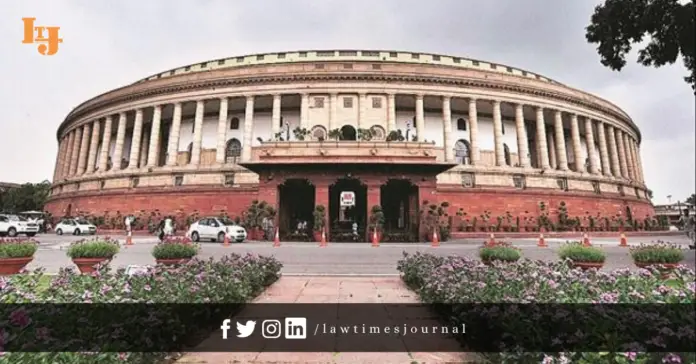
The Union Cabinet recently approved issuance of an order, which will make as many as 37 Central Laws applicable to the recently formed Union Territory of Jammu and Kashmir. The press release issued by the Union Cabinet on 26th February states, “it is necessary to adapt the Central Laws made under the Concurrent List, with required modifications and amendments, for ensuring administrative effectiveness and smooth transition with respect to the Union territory of Jammu and Kashmir thereby removing any ambiguity in their application in line with the Constitution of India.”
Recent backdrop
Last year on August 5th the Constitution (Application to Jammu & Kashmir) Order, 2019 was introduced. This was done to supersede the previous Constitution (Application to Jammu & Kashmir) Order, 1954, as per the Order of 1954, it listed out provisions of the Constitution of India which would not be applicable to Jammu and Kashmir. But as per the new Order of 2019 all the provisions of the Constitution of India would be applicable to Jammu and Kashmir, with necessary modifications and few exceptions.
Even though, Clause 3 of Article 370 confers upon the President the power to abrogate or modify the Article, there was a pre-condition given for the same. The pre-condition given was that, in order to modify or abrogate Article 370, the President needed to get the concurrence by the Constituent Assembly of Jammu and Kashmir. However, the Constituent Assembly had ceased to exist ever since the 1950s. In order to remove this hurdle, the Presidential Order had amended Article 367; by this it has replaced the reference “Constituent Assembly” to mean “Legislative Assembly” under Article 370(3).
Key Features
- Section 96 of the Jammu & Kashmir Reorganization Act, 2019 empowers the Centre to make such Orders.
- According to the Order as many as 37 Central Laws will now be applicable to the Union Territory of Jammu and Kashmir.
The Cabinet’s Order
As per the Order issued by the Union Cabinet on 26th February, 2020, “All the Central Laws which are applicable to whole of India except the erstwhile State of Jammu and Kashmir before appointed date i.e. 31.10.2019 are now applicable to Union territory of Jammu and Kashmir w.e.f. 31.10.2019. Further, it is necessary to adapt the Central Laws made under the Concurrent List, with required modifications and amendments, for ensuring administrative effectiveness and smooth transition with respect to the Union territory of Jammu and Kashmir thereby removing any ambiguity in their application in line with the Constitution of India.”
The Centre under Section 96 of the Jammu & Kashmir Reorganization Act, 2019 is empowered to make adaptations or modifications to pave way for the implementation of any law which is applicable to the rest of India, to the Union Territory of Jammu and Kashmir. Section 96 states, “For the purpose of facilitating the application in relation to the successor Union Territories, of any law made before the appointed day, as detailed in Fifth Schedule, the Central Government may, before the expiration of one year from that day, by order, make such adaptations and modifications of the law, whether by way of repeal or amendment, as may be necessary or expedient, and thereupon every such law shall have effect subject to the adaptations and modifications so made until altered, repealed or amended by a competent Legislature or other competent authority.”
The Cabinet has given the green signal for the issuance of the order to implement the Central Laws to the recently formed Union Territory of Jammu and Kashmir, to ensure that there is administrative effectiveness and to remove any sort of ambiguity in the implementation of these laws. As of now, there is no surety as to which Central laws the Central Government is planning to implement in the Union Territory of Jammu and Kashmir.
Edited by J. Madonna Jephi
Approved & Published – Sakshi Raje
Reference
1. https://pib.gov.in/PressReleasePage.aspx?PRID=1604415 (last visited 28th February, 2020, 5:38 PM)








